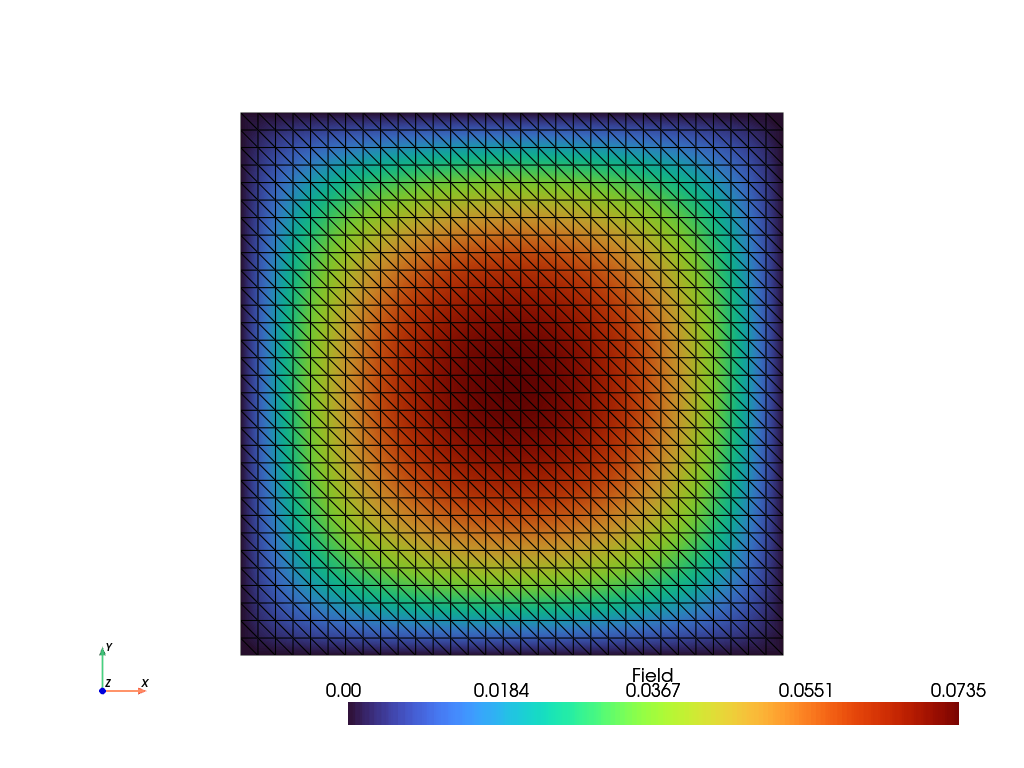Note
Go to the end to download the full example code.
Poisson Equation#
The Poisson equation
\[\text{div}(\boldsymbol{\nabla} v) + f = 0 \quad \text{in} \quad \Omega\]
with fixed boundaries on the bottom, top, left and right end-edges
\[v = 0 \quad \text{on} \quad \Gamma_v\]
and a unit load
\[f = 1 \quad \text{in} \quad \Omega\]
is solved on a unit rectangle with triangles.
The Poisson equation is transformed into integral form representation by the divergence (Gauss’s) theorem.
\[\int_\Omega \boldsymbol{\nabla} v \cdot \boldsymbol{\nabla} u \ d\Omega
= \int_\Omega f \cdot v \ d\Omega\]
For the newtonrhapson() to converge, the linear form of the Poisson
equation is also required.
import felupe as fem
from felupe.math import ddot, grad
mesh = fem.Rectangle(n=2**5).triangulate()
region = fem.RegionTriangle(mesh)
scalar = fem.Field(region)
field = fem.FieldContainer([scalar])
@fem.Form(v=field, u=field)
def a():
"Container for a bilinear form."
return [lambda v, u, **kwargs: ddot(grad(v), grad(u))]
@fem.Form(v=field)
def L():
"Container for a linear form."
return [lambda v, **kwargs: ddot(grad(v), grad(scalar)) - kwargs["scale"] * v]
poisson = fem.FormItem(bilinearform=a, linearform=L, kwargs={"scale": 1.0})
boundaries = {
"bottom-or-left": fem.Boundary(field[0], fx=0, fy=0, mode="or"),
"top-or-right": fem.Boundary(field[0], fx=1, fy=1, mode="or"),
}
step = fem.Step([poisson], boundaries=boundaries)
job = fem.Job([step]).evaluate()
view = mesh.view(point_data={"Field": scalar.values})
view.plot("Field", show_undeformed=False).show()

Total running time of the script: (0 minutes 0.531 seconds)